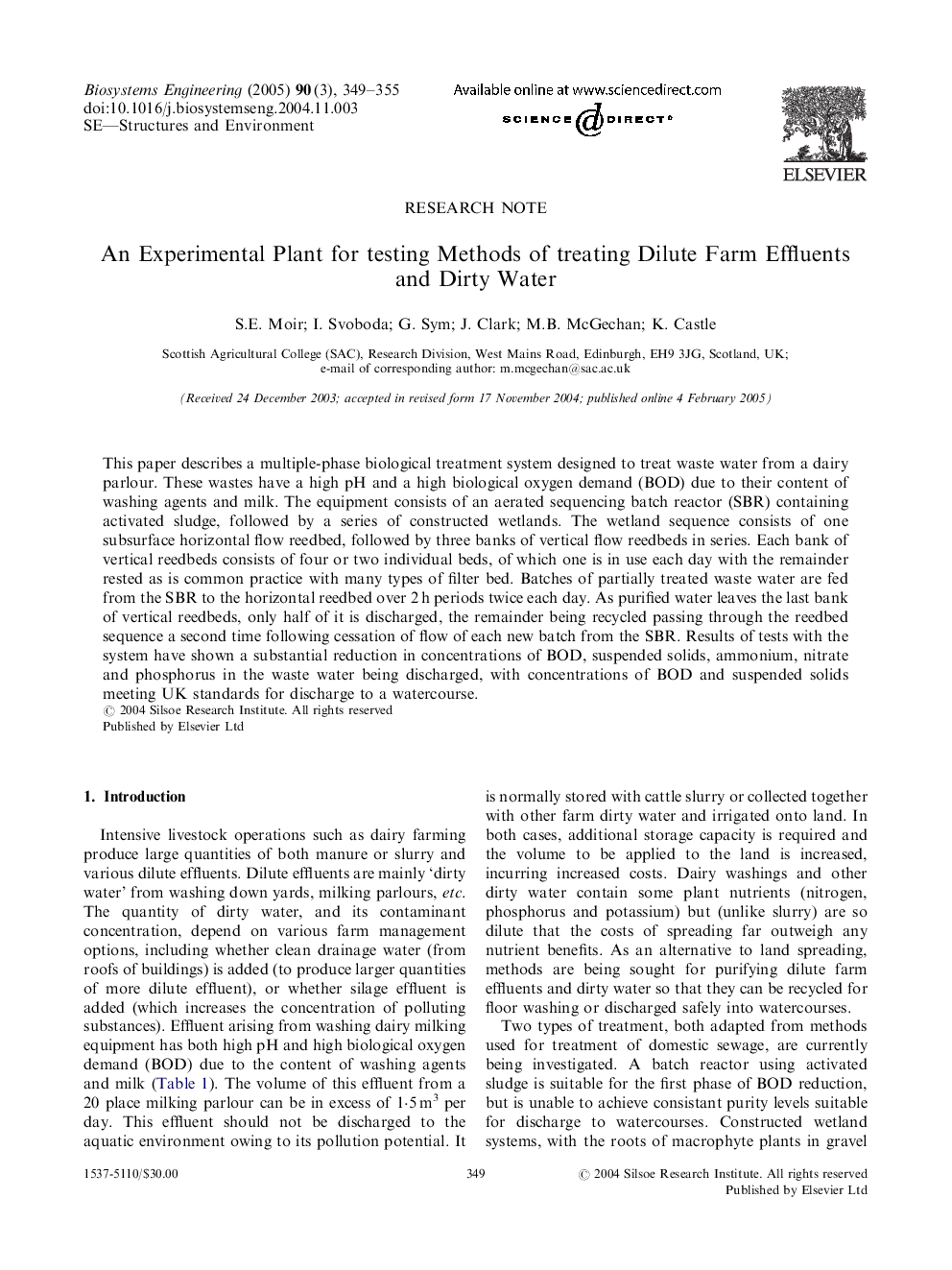| Article ID | Journal | Published Year | Pages | File Type |
|---|---|---|---|---|
| 10679867 | Biosystems Engineering | 2005 | 7 Pages |
Abstract
This paper describes a multiple-phase biological treatment system designed to treat waste water from a dairy parlour. These wastes have a high pH and a high biological oxygen demand (BOD) due to their content of washing agents and milk. The equipment consists of an aerated sequencing batch reactor (SBR) containing activated sludge, followed by a series of constructed wetlands. The wetland sequence consists of one subsurface horizontal flow reedbed, followed by three banks of vertical flow reedbeds in series. Each bank of vertical reedbeds consists of four or two individual beds, of which one is in use each day with the remainder rested as is common practice with many types of filter bed. Batches of partially treated waste water are fed from the SBR to the horizontal reedbed over 2Â h periods twice each day. As purified water leaves the last bank of vertical reedbeds, only half of it is discharged, the remainder being recycled passing through the reedbed sequence a second time following cessation of flow of each new batch from the SBR. Results of tests with the system have shown a substantial reduction in concentrations of BOD, suspended solids, ammonium, nitrate and phosphorus in the waste water being discharged, with concentrations of BOD and suspended solids meeting UK standards for discharge to a watercourse.
Related Topics
Physical Sciences and Engineering
Engineering
Control and Systems Engineering
Authors
S.E. Moir, I. Svoboda, G. Sym, J. Clark, M.B. McGechan, K. Castle,
